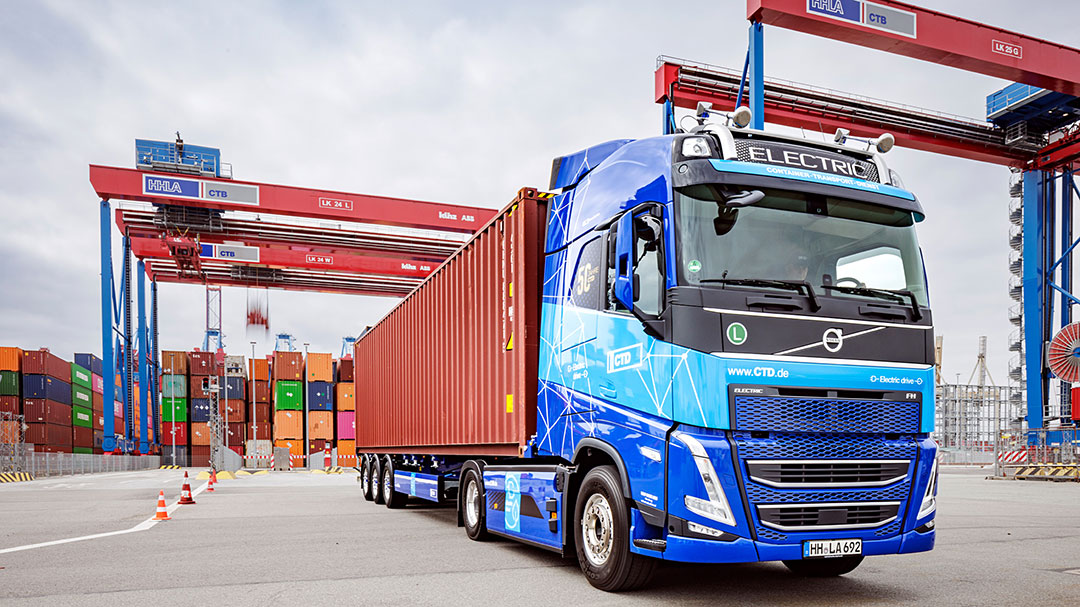
Jasper Rothfels
Electric trucks, solar panels, battery storage: climate-friendly forms of energy generation and use are indispensable tools on the road to decarbonisation. However, their purchase not only costs companies money, but can also generate more revenue. This is the finding of a survey of 4,701 CEOs worldwide conducted by the auditing and consulting firm Pricewaterhouse Coopers (PwC). According to the 28th Annual Global CEO Survey published in January, one in three (33 percent) report that climate-friendly investments have led to higher revenues in the past five years. Around two-thirds say that such investments have either reduced costs or been cost-neutral.
According to Strategy&, PwC’s global strategy consulting firm, many CO2 reduction measures are also worthwhile for logistics companies due to rising CO2 prices and efficiency gains. Daniel Haag, Director at Strategy&, cites examples such as “optimising the (warehouse) network, high-performance transport management and traffic routing systems, the clever use of intermodal transport solutions and investment in photovoltaic systems”.
This is confirmed by Hamburger Hafen und Logistik AG (HHLA), which, for example, is focusing on the extensive electrification of terminal processes and a high proportion of rail transport. “The majority of our investments in climate-friendly technologies and processes also pay off economically, whether through efficiency gains, cost reductions or the strengthening of our market position,” says Jan Hendrik Pietsch, Head of Sustainability. Last year, 80 per cent of turnover and 85 per cent of investments were rated as sustainable according to the EU taxonomy.
Green drives – economically on the rise
Strategy& Director Haag also notes that sustainable drive technologies are becoming increasingly competitive from an economic perspective. In addition, logistics customers are increasingly demanding sustainable solutions, as many of them are pursuing their own climate targets and rely on logistics providers to help them achieve these. Investing in climate protection strengthens competitiveness.
Logistics companies such as CEP service providers are clearly feeling the effects of this. “Sustainability has long been a relevant competitive factor,” says GLS Germany spokesperson Pelle Faust. GLS already delivers to over 300 German cities with low or zero emissions, and the switch to electric vehicles, which currently make up 27 percent of the fleet, is leading to measurable CO2 reductions and operational efficiency gains. However, this does not automatically increase revenue, as the investments only pay off after a longer period of time, as Martin Andresen, Head of Corporate Development at Hermes Germany, emphasises.
According to Faust, the installation of photovoltaic systems at the depots and the use of the electricity generated has paid off more quickly for GLS. This has enabled the company to reduce energy costs at several ” ” locations earlier and more significantly than expected. Hermes Germany aims to achieve “locally emission-free” deliveries in 80 German city centres by the end of 2025, up from 70 in March. Until recently, combustion vehicles were still economically superior to electric vehicles for the last mile, “but this trend is gradually beginning to change,” says Andresen.
Climate protection becomes a selling point
Dachser describes its climate protection measures as “significant selling points.” The logistics service provider operates more than 130 electric trucks over 3.5 tonnes across Europe and has set up emission-free delivery zones in 18 major cities, with seven more to be added in 2025. Climate protection requires investment, for example in electric trucks, but also offers savings potential, such as toll advantages that some countries grant to zero-emission vehicles. In a few cases, Dachser has also been able to put electric trucks into operation in partnership with customers in order to use them specifically for transporting their goods.
For textile logistics company Meyer & Meyer, the long truck is a vehicle that pays off “from day one” due to “increased efficiency in terms of loading space,” says Benedikt Osterheider, Head of Sales, Transport & Customs. The fuel savings are between 15 and 20 percent. Meyer & Meyer also offers manufacturers and retailers cleaning and repair services for returned goods in order to extend their life cycle. “This enables customers to meet their sustainability goals while generating revenue through resale and rental,” says Nicola Eibich, Circular Fashion Consultant.
The rail freight company TX Logistik is investing in more efficient electric locomotives and offers a transhipment system that allows non-craneable semi-trailers to be lifted onto trains. According to the company, this could reduce CO2 emissions in intermodal transport by up to 65 percent. As part of a programme running until the end of 2024, the shipping line Hapag-Lloyd is equipping over 100 ships with new bulbous bows and new propellers, among other things, which, according to Senior Director of Sustainability Philip Kettelhodt, will result in CO2 savings of around 6 to 7 per cent and – due to reduced fuel consumption – also bring financial benefits.
All this shows that climate protection measures can pay off. But why don’t they lead to higher sales more often, which according to PwC only one in five respondents in Germany (20 percent) report, even though 96 percent invest accordingly? PwC points to different regulations in individual states. Globally, a quarter of companies consider “complex sustainability regulations” to be a burden, and in Germany this figure rises to half. Here, half of those surveyed also report higher costs. These play a role in the price of electric trucks, for example.
Despite all the challenges, there are positive prospects here: according to calculations by Strategy, the total costs of electric trucks in 2030 will be around 29 percent lower than those of diesel trucks in distribution transport and around 25 percent lower in long-distance transport. From the perspective of logistics companies such as Dachser, planning security, reliable framework conditions and the expansion of charging and power grid infrastructure are crucial for the success of electric mobility.
Do you have a special request?
Contact us if you would like to learn more about the efficiency of German logistics!